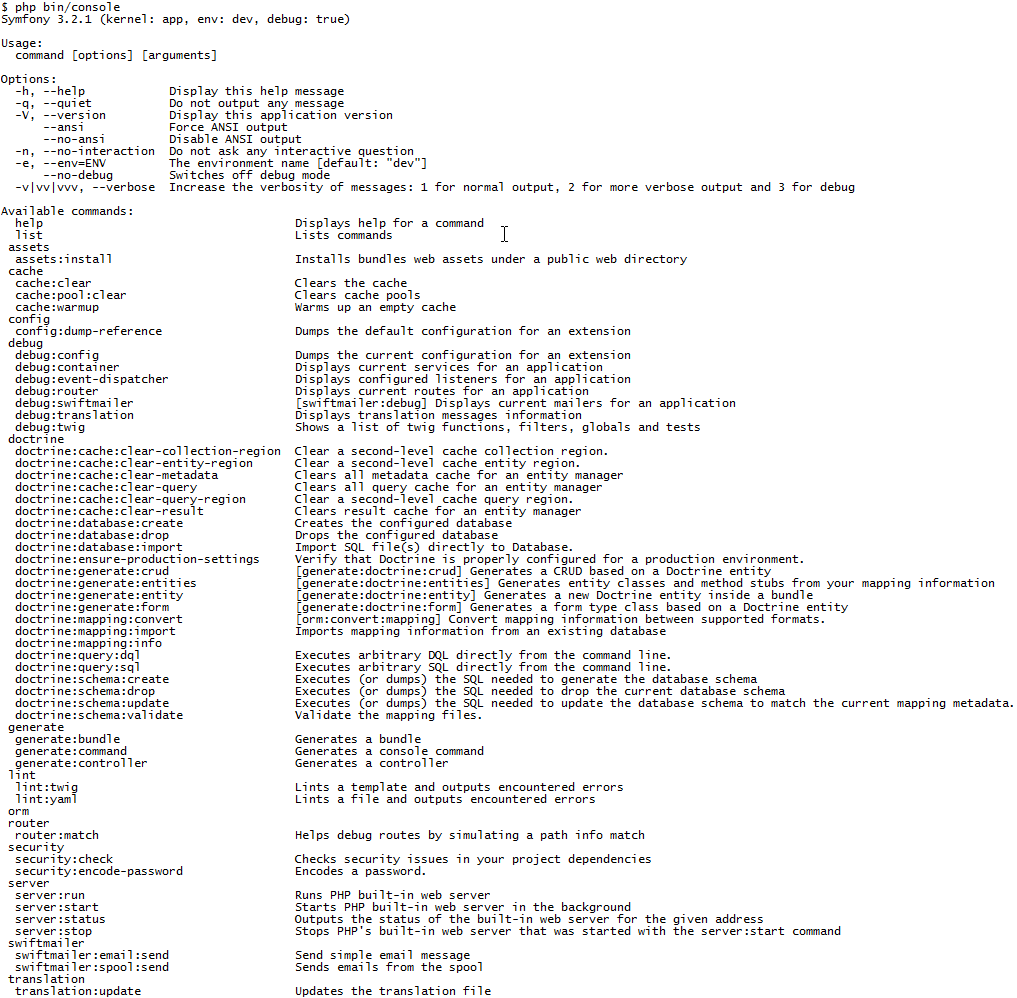A number of popular PHP frameworks and platforms utilize some sort of console application in order to assist with development, deployment, and maintenance of our projects. The Symfony framework, for example, comes with its own console application empowered with dozens of nifty commands. These can be accessed by executing the php bin/console command within the root directory of a Symfony project:

Each of the listed commands executes a very specific purpose; therefore, assisting our project in various ways. While the Symfony framework installation and overall details are out of the scope of this book, there is a component within it that we are interested in. The Console component, while part of the Symfony framework, can also be used as a standalone component to build these types of console applications.
The Console component is available in two flavors:
- Composer package (
symfony/consoleon Packagist) - Git repository (https://github.com/symfony...



